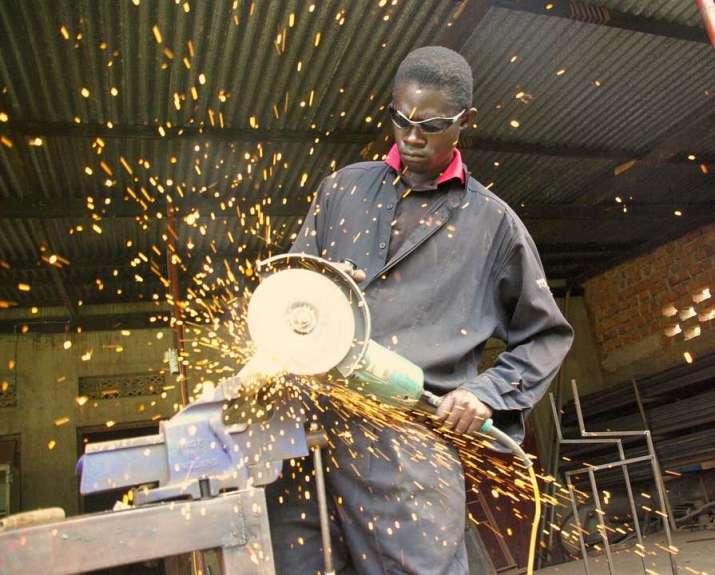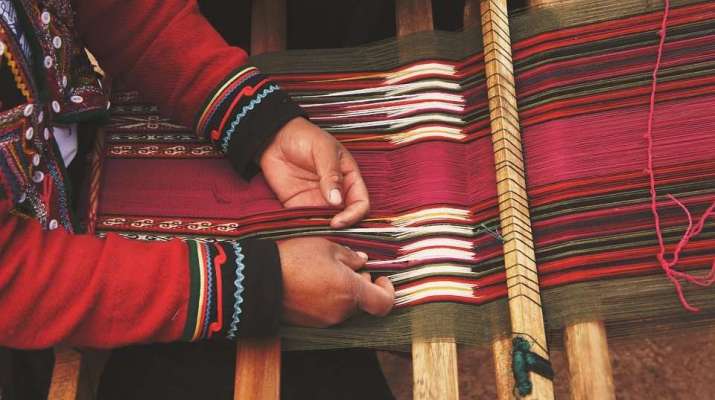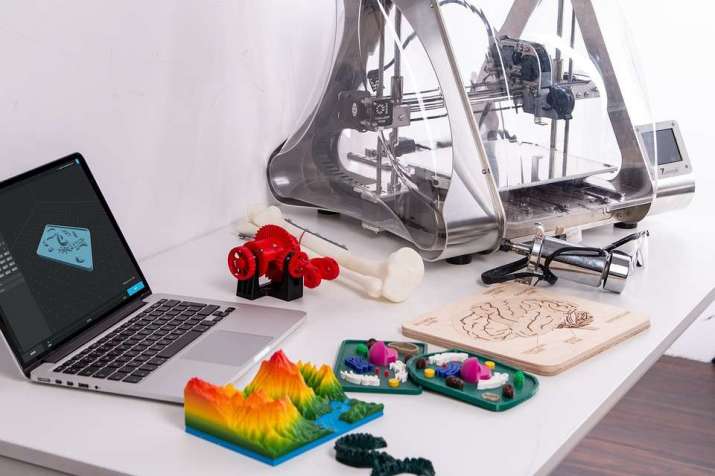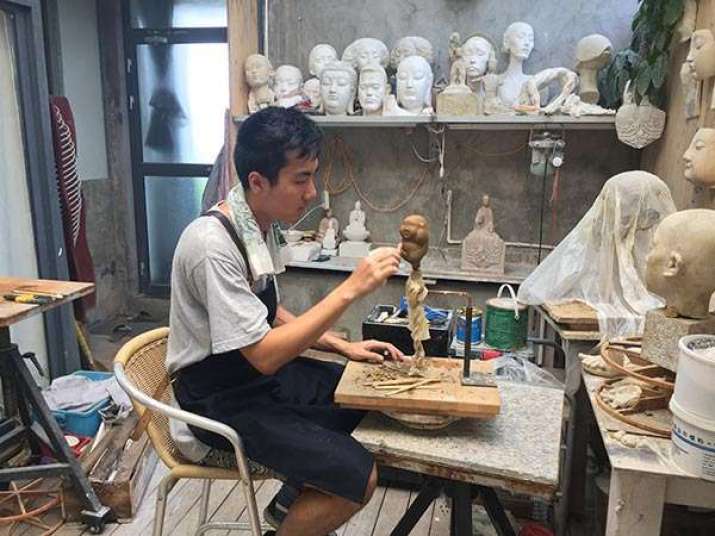FEATURES|COLUMNS|Bodhisattva 4.0
Makers

In this world of mass production, many of us feel a nostalgia for the age of craft that preceded the Industrial Revolution of the 1800s. It’s a nostalgia founded on the notion of authentic identity rather than a purchased persona, a feeling of uniqueness and self-worth beyond being just another drone in the hive.
Since we can’t actually return to that mythical age, we build our uniqueness through customization. We shop for unique handmade items on Instagram, Pinterest, Etsy, eBay, and the like. But beyond that, we might feel the urge to make stuff ourselves. We might go to paint-your-own ceramics studios, take stained glass classes, or join a knitting circle. It looks like a way out of consumerism: we reframe ourselves as makers. In fact, entire (very lucrative) industries have sprung up to satisfy this quest for a new form of self-made identity.
There is much value to this transformation. By opting out of the normative role of passive consumer, we’re empowered to be creative, to make and sell and share with peers directly. Maker culture is now a real thing, not just the exclusive enclave of weird folk wearing gnome hats.
One has only to look at the spontaneous outpouring of cottage-industry masks for healthcare workers from ordinary citizens around the world. There’s also a story of a high school student who designed ear protectors for surgical masks (think baseball cap strap) and printed them on his home 3D printer. He also shared the code online for others to replicate, and his smart idea went viral. Now thousands have been distributed.
Somehow, this new approach has become associated with Buddhism. How did that happen? Mindful physical work (samu in Japanese) has always been an essential component of Zen training. How did chopping wood and hauling water come to be a meme in modern Western civilization?

It began with an appreciation (dating back to the first encounters with Japanese culture by Western explorers) for the painstaking attention to detail of Japanese artisans, and the lengthy processes required to achieve the end product. American author and philosopher Robert Pirsig distilled the ethos of this in his popular book Zen and the Art of Motorcycle Maintenance. Canadian journalist Malcolm Gladwell explored the psychology of this in his thematic 10,000-hour Rule in the book Outliers. More recently, American researcher Matthew Crawford has purified it into a bit of a manifesto, Shop Class as Soulcraft, in which he explicitly explores the mental aspect of craftsmanship, saying: “Craftsmanship means dwelling on a task for a long time and going deeply into it, because you want to get it right.”
Most of the time, we are caught in relative powerlessness as cogs in a giant assembly line, endlessly checking our to-do lists. I think what’s romantic here about the notion of makerhood is the sense of agency and escape from discursive thought. These visions of a path to our natural liberation are enticing: Make Making Great Again. But the reality is somewhat more complicated.
Consider the modern incarnation of makerdom. We use 3D printers (also known to makers as “fabjigs”), peer-to-peer networks (P2P), open source code, makerspaces, crowdsourced problem-solving (e.g., Innocentive), the gig economy (e.g. Fiverr, UpWork, or Amazon Mechanical Turk), and other modes of digitally driven manufacturing. This brave new world looks a lot like a chaotic dystopia, bearing a greater resemblance to the musings of Silicon Valley venture capitalist Marc Andreessen (co-founder of Netscape back in the day), or the early science fiction of Neal Stephenson (especially in The Diamond Age).
In this brave new world, what used to involve chopping wood and hauling water now requires hours of coding, information architecture, control of robotic machines that are the modern incarnation of Jacquard looms, collaboration via cyberspace, and so on.
I’m going to try to deconstruct the “maker” identity and tease out what is or is not an appropriate perspective for an engaged Buddhist. Let’s start with some things a maker is not . . .

A maker is not a prosumer buying top-of-the-line equipment for a hobby, a Luddite rejecting all forms of industrial economy, a bangle-Buddhist making bamboo jewelry, a social media influencer for the latest fashion fad, or an evangelist for the new economy promoting free-market capitalism.
As the Buddha taught, abandoning desire is the path to equanimity. Making something yourself does not end the quest to make something else. In other words, while concentrating on the somatic experience of physically making something can be very satisfying, baking bread is a far cry from making a religious icon, for example. The somatic experience of meditation is a profound exercise in making nothing.
Controlling the means of production does not mean a maker controls the full spectrum of business and work. Being mindful of the fact you’re shoveling coal doesn’t transform it into sugar.
It’s worth noting here that most of the world’s people have a much lower living standard than folks living in Europe and North America. They are perpetually engaged in making do with what they have, just to get by. So craft as a form of self-actualization is really a luxury reserved for the fortunate few, and those who serve them. It is as often the result of making do when government leadership fails.
In fact, in our capacity as workers participating in livelihood activities, all of us are makers. It’s just that the mode of work has changed; that’s impermanence. Yes, for the nimble, opportunity awaits. For most, however, work is still a means to an end. Self-actualization lies in another facet of life. We may call our healthcare workers heroes, but if we don’t recognize everyone’s essential workerness, we’re missing the deeper point.

Life was pretty good for the working class when unions were strong. Now, the tide of modern economies has destroyed that solidarity and pushed individuals into low-paying, insecure, part-time employment with few benefits. From the Uber Eats delivery gal to the adjunct professor, our corporate structures have pushed workers into becoming freelancers, externalizing the real costs of that downloading from a corporate responsibility of good citizenship onto government agencies unable to cope with the implications. The government agencies then defund the social safety net, claiming there’s no money available because of the need for tax cuts to corporations or from trickle-down economics. The changing rules of work may be creating more harm than good, particularly for the “precariat” class. In this pandemic, much of the bailout money seems to be going to folks who are already very rich.
Those in the privileged northern hemisphere have the leisure to self-actualize beyond the world of work. We might eat right, practice yoga, bake, volunteer at a local charity. We might even make free face masks. But compassion has to be bigger than that. As bodhisattvas, we have to figure out how to alleviate the suffering of others, and a lot of that suffering takes place in the world of work. We need to make change, not stuff.
Never has that been more important, more possible, and more relevant than in this post-pandemic pivot, where we have an opportunity that is unique in our generation: to transform the paradigm on which the world runs.
Here are just a few examples of what bodhisattvas can do as makers. Let’s make Fair Trade certified supply chains, gender pay-equity, gender education-equity, social entrepreneurship, guaranteed minimum wage, open hiring, employee cooperatives, housing-first urban policy, walkable cities, restorative justice, impact investing, local economies, and the like. Let’s respect all makers.
Let’s start thinking about regenerative design for a permaculture that will sustain future generations on Planet Earth. There are many good folks already doing that work. Help them get the word out and change minds.
 From chinadaily.com.cn
From chinadaily.com.cnJohn Harvey Negru is publisher at The Sumeru Press, Canada’s largest independent Buddhist book publisher, and author most recently of Bodhisattva 4.0: A Primer for Engaged Buddhists. The book comprises 108 short introductions to the ethical issues inherent in emerging technologies, environmental crises, and a sustainable future, from a Buddhist perspective, supplemented by 500+ resources for further study and networking. In addition to having been involved in many Buddhist community development projects and environmental causes over the past 50 years, Negru has been a technological design educator for more than 25 years.
This series of 12 articles about Green Buddhism is adapted from topics in Bodhisattva 4.0: A Primer for Engaged Buddhists.
References
Crawford, Matthew. 2009. Shop Class as Soulcraft. New York: Penguin.
Gladwell, Malcolm. 2008. Outliers. New York: Little, Brown & Co.
Pirsig, Robert. 1974. Zen and the Art of Motorcycle Maintenance: An Inquiry into Values. New York: William Morrow & Co.
Pistono, Matteo. 2019. Roar: Sulak Sivaraksa and the Path of Socially Engaged Buddhism. Berkely, CA: North Atlantic Books.
Stephenson, Neal. 1995. The Diamond Age: Or, A Young Lady’s Illustrated Primer. New York: Bantam Spectra.
See more
Shop Class as Soulcraft (The New Atlantis)
Robert Pirsig’s obituary (The Guardian)
Sarvodaya; Shramadana Movement, Sri Lanka
Related features from Buddhistdoor Global
Another Kind of Pilgrimage
Wrestling with the Big and the Small
What to Do with this World?
Buddha Stuff














